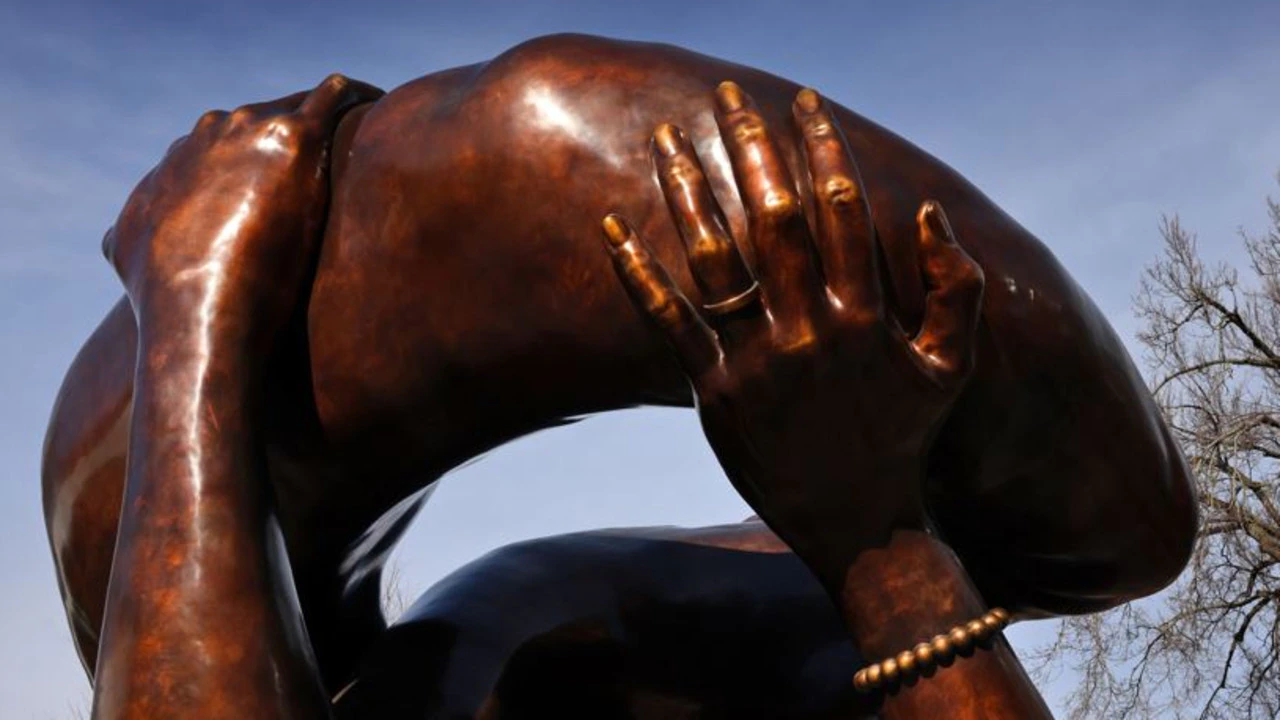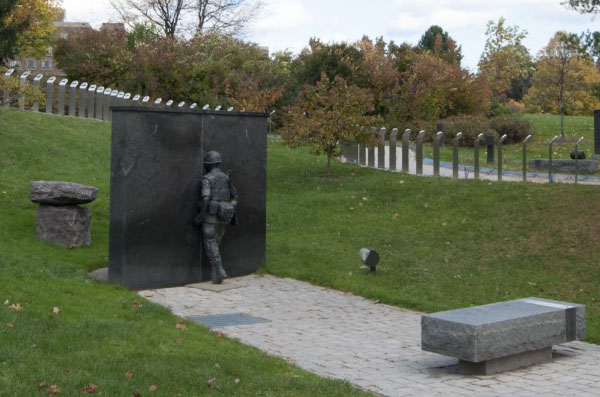“Art-making is not about telling the truth, but making the truth felt.” – Christian Boltanski (French sculptor)
Artistic representations are given to us in many forms. There are paintings and drawings, sculptures, and photography. Others include writing, whether prose or poetry, music in its many varied styles, and of course vocalist performances. We might also consider films and other creative programming to be artistic in their presentations.
In whatever form, the work of the artist is meant to provide a meditative quality, a spark of the imagination, and perhaps a sense of inner wonder. Ultimately, when one pauses to observe and reflect, the work should move beyond thought, serving to inspire and even invigorate the soul.
Therefore, what conclusion should we arrive at when artistic efforts and presentations leave us with puzzling questions and a sense of vague uncertainty? Consider the following sculpture entitled The Embrace, recently unveiled in Boston.

This sculpture by Hank Willis Thomas was designed for the organization Embrace Boston and measures 20 feet tall and 32 feet in diameter. The intention was to honor a famous photo of Dr. Martin Luther King, Jr embracing his wife Coretta Scott King on the occasion of Dr. King receiving the Nobel Peace Prize in 1964.
In spite of ten million dollars to commission the sculpture and eventually place it in the park, criticism of the piece has mounted with critics as well as casual observers describing it as depicting male genitalia. More than that, many question how such a design actually honors the iconic Civil Rights leader, though to be balanced, Martin Luther King III endorsed the sculpture!
Let us consider another piece of art, a favorite of this writer, located at Highland Park in Rochester, New York.

The statue is called Into the Unknown, a representative depiction of the 280 Rochester area young men who gave their lives during the Vietnam War. The life-size soldier willingly strides into unknown danger and an unknown future, represented by a wall of black marble. Each bollard in the far background has the name and personal information for each of the 280 men who gave their lives.
Art is a form of communication and messaging, so perhaps we should ask ourselves what messages are communicated through the two sculptures in this article. What is observed visually? What questions are asked? What is the emotional response? Is there a message to be received?
If no message can be determined, if there is no intellectual illumination or emotional revelation, if there is no inspiration for the soul, then the artwork might be considered to be empty of meaning and without effect.
Instead, art should inspire the intellect and the emotions, leading to deeper thought with application of the visual qualities and subtle messaging into our own lives. And perhaps on some rare occasions, we will be left breathless with wonder that fills our hearts with joy!
© Jeffery J. Michaels / Plain English Publications 2023
(Quotations allowed with attribution to this blog)
